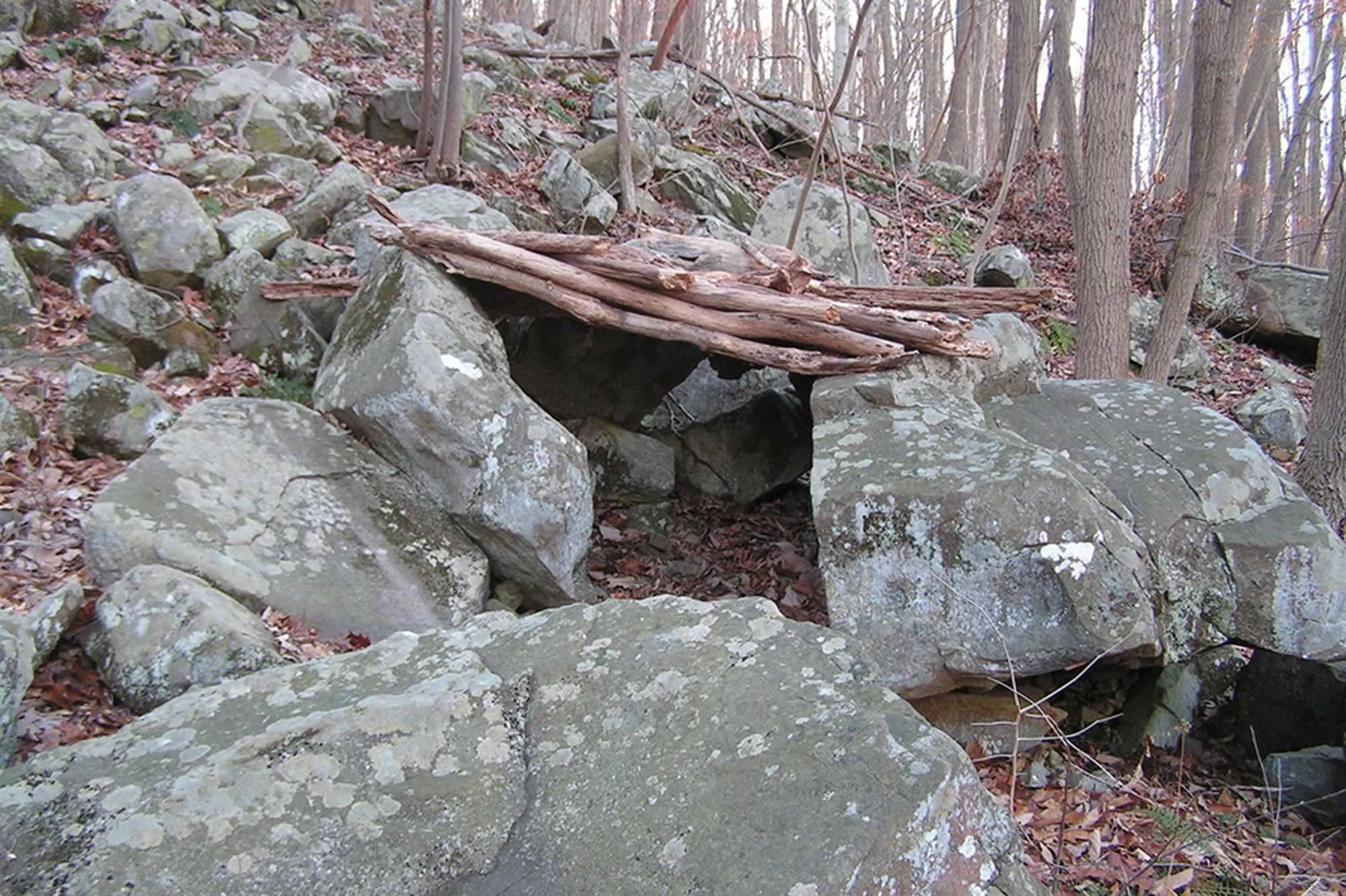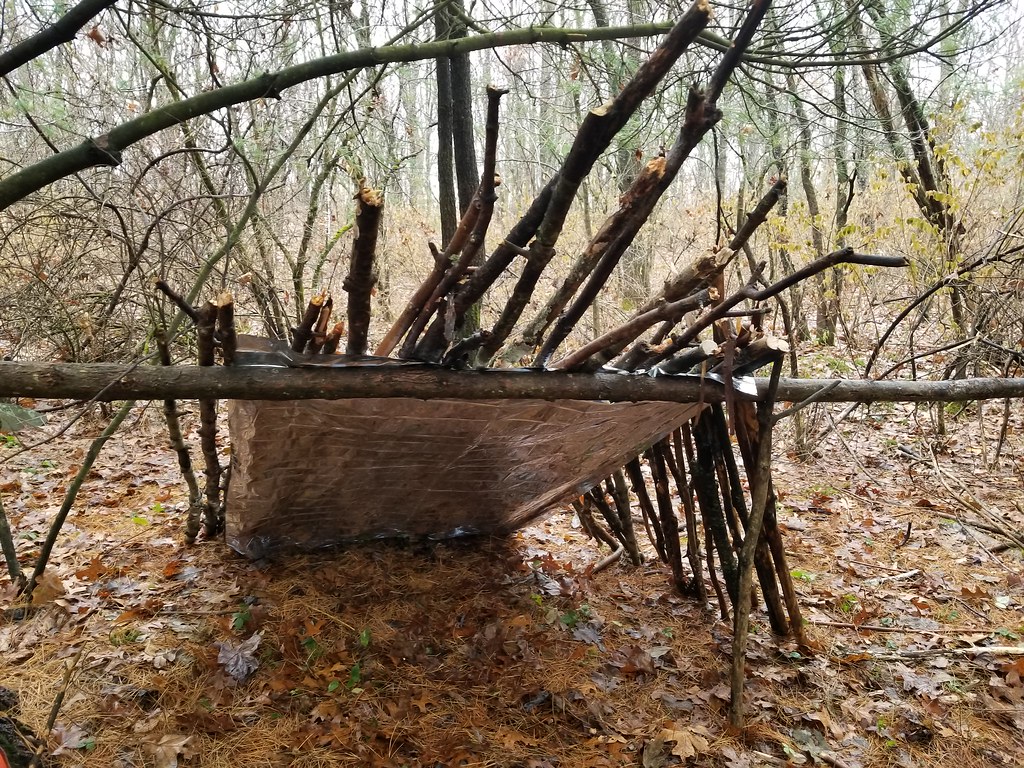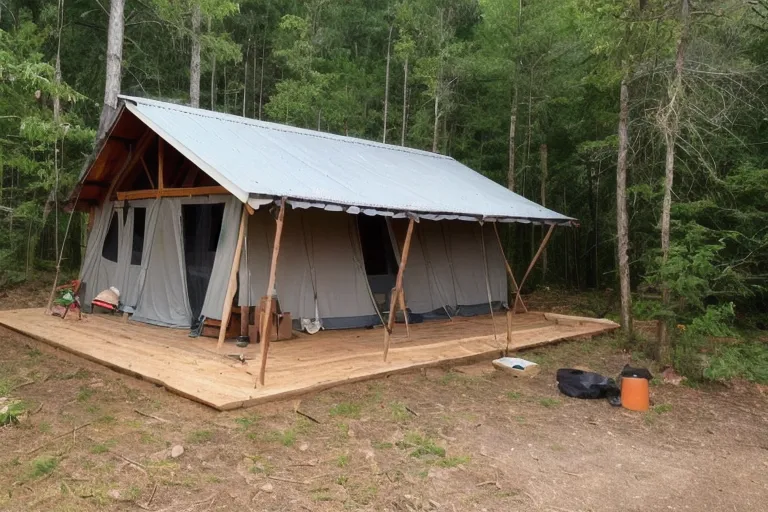We're taking a deep dive into one of the most fundamental skills you'll need in the wild: shelter building. The ability to construct a reliable wilderness survival shelter can mean the difference between a comfortable night's sleep and a situation that could quickly turn dire. I'm like Elvena Angier, your seasoned guide through the nuances of crafting everything from a primitive shelter to a more permanent abode in nature's backyard. Join me as we embark on an enlightening journey into the world of wilderness shelters.

The Importance of a Sturdy Wilderness Shelter
Understanding Your Shelter Needs
Before you even gather the first branch or pine bough, it's crucial to assess your shelter needs. Consider factors such as weather conditions, the materials available in your environment, and the amount of time you plan to spend in your wilderness retreat. Whether you're looking for temporary shelter or aiming to create a more long-lasting survival situation refuge, the principles of shelter building remain constant.
The Psychology of Shelter
Shelter is not merely a physical necessity; it has profound psychological implications in a survival situation. The sense of security that a well-built survival shelter provides can significantly enhance your mental well-being, keeping panic at bay and allowing for clear-headed decisions.

Crafting the Perfect Wilderness Survival Shelter
The Basics: Debris Hut and Tarp Shelter
Debris Hut: Your Natural Insulator
Gather large amounts of debris, such as leaves and smaller branches.
Use a fallen tree or a sturdy ridge pole supported by two trees as your framework.
Layer the debris thickly to ensure excellent insulation and weatherproofing.
Tarp Shelter: The Versatile Option
Utilize a tarp and cordage to create a quick and adjustable shelter.
Anchor your tarp with rocks or logs, and consider a simple A-frame design for stability.
Pro Tip: Always place your shelter's entrance away from prevailing winds to maintain warmth and prevent exposure.

The Art of Bushcraft Shelter Construction
Utilize natural materials like evergreen boughs, pine needles, and long branches.
Fashion a rustic retreat that harmonizes with the surrounding wilderness.
Bushcraft skills allow for creating personalized and functional survival structures.
Embracing the Cold: Winter Survival Shelters
Snow caves and igloos can be life-saving in snowy landscapes.
Pack the snow to create sturdy walls and an insulating barrier from the harsh cold.
Advanced Shelter Building Techniques
Creating Permanent Structures in the Wild
Luxurious Log Cabins
For a more permanent solution, consider constructing a log cabin.
It requires significant time and effort but offers a robust and long-term wilderness home.
Other Long-Standing Designs
Stone shelters and mud-brick huts are other examples of enduring wilderness homes.
Combine these with a fire pit and a sleeping bag, and you've got yourself a cozy setup.

Survival Shelters in Specific Scenarios
The Convenience of Camping Shelters
Camping shelters are typically less labor-intensive and designed for quick assembly and disassembly.
These can range from simple lean-tos made of sticks and leaves to elaborate canvas tent setups.
Emergency Shelters: Quick and Effective
In an emergency, your survival gear should include a compact, lightweight shelter option.
Emergency blankets and bivy sacks can act as a temporary refuge until a more substantial shelter can be constructed.
Essential Gear for Shelter Building
A reliable survival gear checklist is indispensable.
Include items such as tarps, cordage, a good hatchet or knife, and a fire starter.
Practical Tips and Tricks
When selecting a site, avoid areas with dead trees or loose branches that could fall.
Always insulate yourself from the ground to retain body heat.

Survival Skill Development and Training
Invest time in learning essential wilderness survival skills before you need them.
Practice makes perfect - build different types of shelters in varying environments to hone your abilities.
Enhancing Shelter Durability and Comfort
The Role of Evergreen Boughs and Pine Needle Insulation
Evergreen Boughs: Not only do they serve as excellent roofing material, but their dense foliage provides superior insulation. Overlap the boughs like shingles to shed rain and snow effectively.
Pine Needle Layering: A thick layer of pine needles can add significant warmth to your shelter's floor. They serve as a natural mattress, keeping you elevated from the cold, damp ground.
Utilizing the Versatility of Fallen Trees
Fallen trees can offer much more than just wood for fires and building materials. They can be the base for a robust ridge pole or even act as a natural windbreak for your shelter structure.
Constructing with Sticks and Leafy Branches
Sticks: They are the skeleton of many shelters, including lean-tos and A-frames. Their abundance makes them ideal for quick construction.
Leafy Branches: Provide additional insulation and camouflage. When woven into the framework, they can increase the stability and warmth of your shelter.

Specialized Shelter Types
The Unassuming A-Frame Shelter
An A-frame shelter is a classic design that is easy to construct and provides reliable protection from the elements.
It can be built with a simple long branch as a spine and covered with a tarp or thatch from natural materials.
Embracing Nature's Bounty: Natural Material Shelters
Tap into the vast array of natural materials around you. From mud and snow to leaves and vines, each element can contribute to a sturdy and eco-friendly shelter.
Incorporating Fire for Warmth and Safety
Positioning a fire nearby can increase the temperature within your shelter.
Ensure proper ventilation to avoid smoke inhalation and reduce the risk of fire accidents.

Survivalist's Bedding: Beyond the Sleeping Bag
While a sleeping bag is essential, natural bedding can supplement warmth and comfort.
A bed of boughs, leaves, or grass can conserve heat and cushion against the hard ground.
The Psychology of Shelter Safety
Secure shelters have a profound impact on psychological resilience in survival situations.
They instill a sense of safety, allowing for restful sleep and mental recovery.
Seasonal and Environmental Considerations
Building Snow Shelters in Winter Climates
Snow shelters, such as igloos or snow caves, are life-saving structures in sub-zero conditions.
Proper construction is key to preventing collapse and ensuring sufficient air circulation.
Adapting to Varied Wilderness Environments
Tailor your shelter design to the specific environment you're in. Whether in a dense forest, a desert, or a mountainous area, use the resources available to you for the best results.

The Ethos of Leave No Trace
Whenever possible, use techniques that minimize impact on the environment.
Dismantle your shelter and scatter natural materials when you leave, ensuring that the wilderness remains pristine for others to enjoy.
Shelter Maintenance and Upkeep
Regular checks and repairs are necessary to maintain the integrity of your shelter over time.
Adjustments may be needed due to weather changes or material wear and tear.
Wilderness Survival as a Skill and a Mindset
Building effective wilderness shelters is as much about mindset as it is about skill.
Approaching each task with patience and resourcefulness can lead to successful outcomes in any wilderness survival situation.

Crafting a Shelter with Longevity: The Permanent Shelter Approach
The Timeless Log Cabin: A Symbol of Resilience
Log Cabins: These enduring shelters are not just a testament to time-honored survival techniques but also offer a chance to create a lasting home in the wilderness. With proper planning and hard work, log cabins can stand against the elements and provide a haven for years to come.
The Natural Shelter: Blending into the Wilderness
Natural Materials: For those who seek to minimize their environmental footprint, shelters made from the land itself, such as mud, stone, and branches, provide a sustainable housing solution.
Sustainability: By using what nature provides, you can construct a shelter that not only withstands the test of time but also respects the delicate balance of the ecosystem.
The Nuances of Primitive Shelter Building
Skill and Craftsmanship: Primitive shelter building is an art that requires a blend of skill, creativity, and an intimate understanding of the environment. Each structure tells a story of human ingenuity and the innate desire to protect oneself from the elements.
Ancestral Wisdom: Drawing from ancient military and survivalist strategies can greatly enhance your shelter-building capabilities, allowing you to create strongholds reminiscent of historic fortifications or simple, inconspicuous hideaways.

The Delicate Dance of Survival: Shelter Building and Fire Management
Combining a sturdy shelter with the warmth and light of a well-managed fire can turn a night in the wilderness into a surprisingly comfortable experience. The key is understanding how to effectively integrate these two survival elements without compromising safety or utility.
Shelter Building as a Reflection of Bushcraft Mastery
Bushcraft Proficiency: Developing shelters speaks volumes about one’s bushcraft skills. Each structure, whether a simple lean-to or an intricate debris shelter, showcases the survivalist's knowledge and ability to harness the natural environment for protection and comfort.
Temporary Shelter: When Mobility is Paramount
In some wilderness survival situations, the need for mobility dictates the construction of a temporary shelter. These shelters are designed to be erected and dismantled swiftly, ensuring that you can stay on the move without leaving a significant mark on the land.
Seasonal Shelters: Adapting to the Elements
Winter Survival Shelter: When the mercury drops, a winter survival shelter can be your best ally. Using snow for insulation and natural heat retention techniques can create a surprisingly warm refuge against the biting cold.
Summer Shade: Conversely, in the heat of summer, shelters with good airflow and shading become critical to prevent overheating and dehydration.

The Role of Fire in Shelter Building
A fire not only provides warmth but can also be used to harden and treat wooden shelter components, making them more resilient against rot and insect infestation.
The Sleeping Arrangements That Make or Break Your Rest
Beyond the sleeping bag, consider leaf beds, animal pelts, or even woven mats as part of your bedding solutions within your shelter for enhanced comfort and warmth.
Shelter Building: A Test of the Human Spirit
The process of building a shelter is as much a psychological challenge as it is a physical one. It requires persistence, patience, and the will to persevere—qualities that are refined and tested with each branch placed and every knot tied.
Final Thoughts on Wilderness Shelter Building
Building a shelter in the wilderness is not only about survival; it's about creating a haven that allows you to thrive in the natural world. Each type of wilderness survival shelter has its unique advantages and challenges, and the right choice depends on your specific circumstances.
Remember, survival is not just about the physical aspect – it's also a mental game. So arm yourself with knowledge, prepare with the right gear, and engage with the environment mindfully. Your ingenuity and bushcraft skills will ensure that, no matter where you find yourself, you'll have the means to create a safe, sturdy shelter.
Keep exploring, stay safe, and never underestimate the power of a well-built shelter in the wild!
